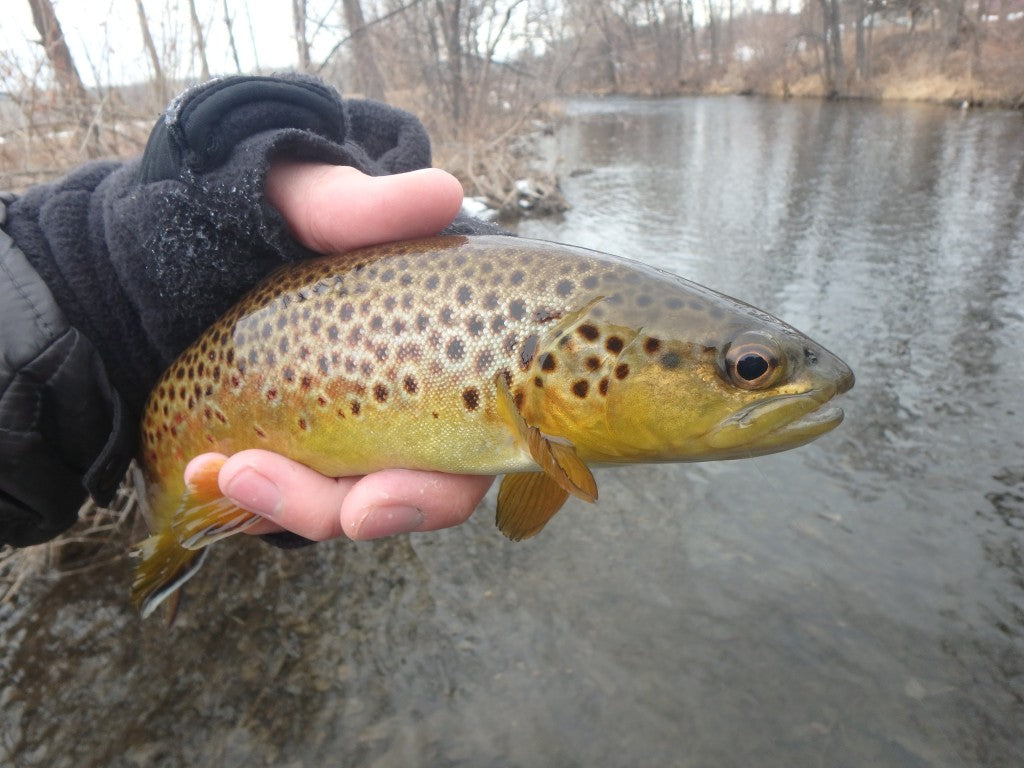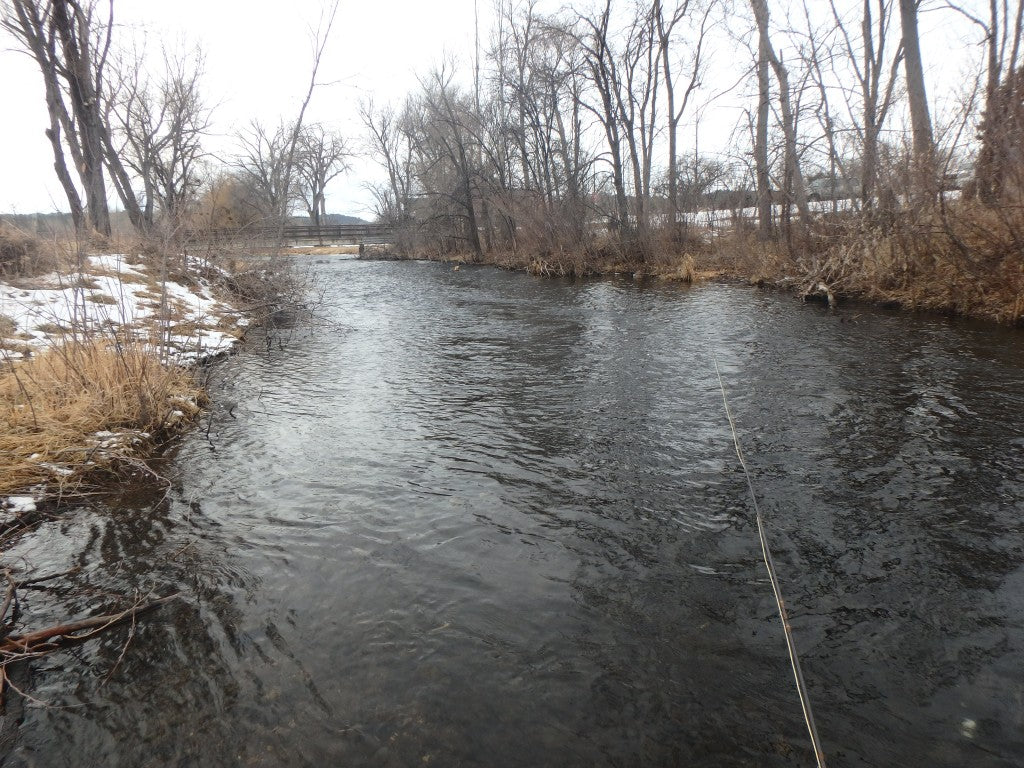Every Winter, we all eagerly await the fantastic midge hatch on Rapid Creek through town that creates some of the best dry fly fishing we see all year. It takes away some of the drudgery of nymphing, and huge numbers of fish can be up on them at times. Traditionally it's a mid February hatch by the time the fish take notice of all the tasty little morsels sitting in the surface film.
Well, it's arrived early this year.
I went out today intentionally looking for rising fish, and went to one of my favorite dry fly runs on the upper end of town. There were a couple random rises when I first got there around 10 this morning, but overall I was a bit disappointed in the number of fish I saw rising. Call it false hope, but I was banking that there would be a midge hatch that early in the day. Either way, I put on a Klinkhamer and a Root Beer Midge dropper and fished my way through the knee-deep water, slowly working every likely looking edge. I had fished up to the head of the run and caught a good number of fish on the midge, and I turned around to take one last glance down for rising fish before I moved on. Just as I turned, I saw a fish rise. The longer I looked, the more fish I saw on the surface. I got out, went around on the bank and crept in below them and knotted on an Eric's Midge and a small midge dry dropper, and just sat and watched for a couple minutes. In the prime thirty yard stretch of this run, I can't really estimate how many fish were rising. There weren't many moments when I couldn't not see a fish on the surface, and they were more or less evenly spread across the foot deep flat - so I started fishing!

Average Rapid Creek Brown on an Eric's Midge!
I caught feisty, 8-14 inch wild brown trout for a couple hours after I swung around to the back of the run. They weren't pushovers by any stretch, and required a pretty solid drift and an accurate fly pattern. That being said, I caught fish on a half-dozen different flies, and I have an inkling that they would eat a number of midgey patterns in size 18-22. 6x tippet was key. The rises were really subtle, however, with just the tip of the trout's nose breaking the surface. If you're in a likely looking dry fly spot, make sure you slow down and give everything a second to calm down. Keep your eyes peeled, and look for the slightest disturbance indicating a rising fish. Morgan's Midges, F-Flies, Para-Sippers, Eric's Midges, small Adams, and Griffith's Gnats all make great midge adult patterns. Adjust as needed, and don't be afraid to change flies!

Picture Perfect Dry Fly Run
After losing count of how many fish I'd hooked or landed, I decided I was going to catch one more and call it a day. A few casts later, a fish rose, the rod lifted, I and I reeled up and headed back to the truck. I only see the dry fly activity improving over the coming weeks and months, and it will gradually transition from midges to BWO mayflies, with a bit of an overlap. This is some of my favorite fishing of the year, and it's nice to be able to go out in town for a couple hours and get your fix!
Feel free to stop by the shop for the latest hot flies or a tip or two on where to go - it's a great time to be out!
Ryan
 Average Rapid Creek Brown on an Eric's Midge!
Average Rapid Creek Brown on an Eric's Midge! Picture Perfect Dry Fly Run
Picture Perfect Dry Fly Run
 Average Rapid Creek Brown on an Eric's Midge!
Average Rapid Creek Brown on an Eric's Midge! Picture Perfect Dry Fly Run
Picture Perfect Dry Fly Run